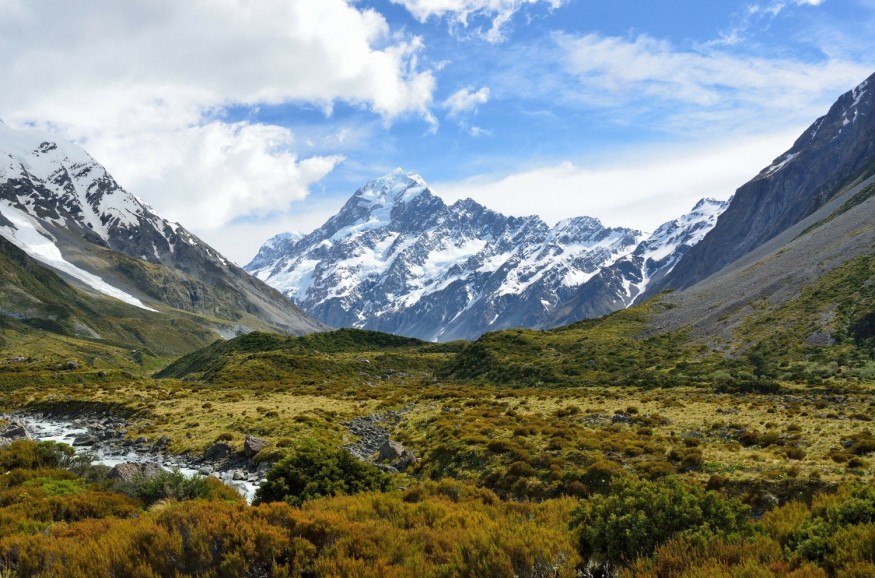
Australia's devastating bushfire season on its east coast which turned entire towns red and orange seemed to be travelling across the ocean - ending up on New Zealand's glaciers.
Smoke and dust from the fire across the channel, mixed with persistent westerly winds to create the incredible sight at Mount Aspiring National Park on Friday.
Travel writer and photographer Liz Carlson wrote on her blog Young Adventuress said seeing the impact of the fires from so far away is "pretty remarkable."
Carlson told Stuff.nz that Mount Aspiring National Park was a cool yet upsetting sight to see. When asked to describe what she saw in the mountain park, her reaction was simple: "Wow, that's sad."
"[The sight was] a [shame] for tourists because it's not normally how our glaciers look. [The scene looks] really tragic for everything that's happening in Australia and really puts into perspective the scale of the bushfires there that it's going [to affect] us in a lot of ways, and it's [devastating] because our glaciers are already deteriorating," Carlson explained.
She said she spends a lot of time at the mountains and the national park's situation not something that she has ever seen.
"Our glaciers don't need [more battles] as they are already truly endangered; it puts the impact of climate change into even more stark reality we can't ignore," Carlson said.
Why did this happen?
Nobody knows what exactly is causing the red colouring. However, there is a "perfect recipe" in the air, according to scientists.
According to Stuff.nz, NIWA principal scientist and forecaster Chris Brandolino said smoke or dust are needed in the air along with the right wind direction to start with. "[Perhaps] having two happening at the same time, that's what's led to this," he added.
Brandolino explained the red snow was a little unusual, but definitely not unheard of due to the strong westerly winds that blew across the country in November, which caused the phenomenon.
Since Australian topsoil is rich in iron oxides known for its characteristic red hue, Brandolino thought that the pinkish red color seen in the mountain park could be soot or a carbon material from burnt wood.
Brandolino explains that whether the red coating in New Zealand's pristine mountains is dust, soot or something else, there needs to have the perfect mix of factors for it to cross the Tasman Sea.
"Australia had numerous fires out there, [which] certainly [had] been a part of it." The land down under had seen some heavy dust storms including one incident in Mildura, Victoria where a storm turned the sky a dramatic red while the temperature reached to 40 degrees Celsius (104 degrees Fahrenheit).
Carlson's magnificent photos show how interconnected our planet's ecosystems truly are. Pollution can reach even the most remote areas, and natural weather events could slide into extremes as Earth's climate rapidly changes on a global scale.
The severity of this year's bushfire season in Australia, while bushfires are not directly caused by climate change, has been attributed to the fact that all fire risk factors are exacerbated by a rapidly warming climate.
© 2025 NatureWorldNews.com All rights reserved. Do not reproduce without permission.





